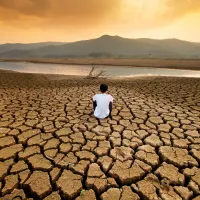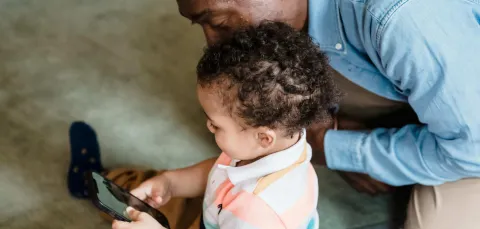A Southampton-led group of researchers found that one billion children are at ‘extremely high risk’ from the impacts of climate change. The researchers presented their findings as part of a UNICEF report at the UN Climate Change Conference, COP26.
'The report, entitled 'The Climate Crisis Is a Child Rights Crisis: Introducing the Children’s Climate Risk Index (CCRI)', reveals that half the world’s children are severely affected by the climate emergency.
Professor Craig Hutton outlines the importance of exploring this issue.
“Globally there are about a billion children who are exposed to multiple hazards, who would be counted as experiencing ‘extreme’ hazards. This figure took even UNICEF by surprise,” says Craig.
Sub-Saharan Africa and South Asia are the two regions that stand out as areas where children are most at risk, says Craig. “As well as being very poor, these areas are going to be hit extraordinarily hard by floods and droughts, which, although it sounds contradictory, go hand in hand: periods of drought are interspersed with sudden inundations of rain that wash away the soil, causing food poverty.”
The need for policy to protect children
Professor Craig Hutton and his team have called for children to have their own policies and approaches to the climate emergency. He says:
“In policymaking, children are often considered as just ‘small adults’,” says Craig. “However, there are aspects of children’s experience such as child labour, migration, health and nutrition that are unique to them. And, unlike adults, children are rarely able to make decisions and influence the situation themselves. For policies to protect our most vulnerable children to work, they need to be specific to the children themselves.”
The report meets the challenge of combining physical data, such as floods and droughts, with social data, such as access to essential services, on a single map. This can show governments across the globe where they most need to focus their resources to protect vulnerable children.
The CCRI has been supported by the Data for Children Collaborative, which includes UNICEF and Save the Children, and includes a multi-university team, including the University of Edinburgh and the University of Stirling, led by the University of Southampton.
Surprise findings about the risk to children
Professor of Sustainability Science, Craig Hutton said:
"Globally there are about a billion children who are exposed to multiple hazards, who would be counted as experiencing ‘extreme’ hazards. This figure took even UNICEF by surprise,” says Craig.
Helping UNICEF to raise awareness
Professor Hutton said “I’m proud that we have helped UNICEF present as accurate a picture as we can at this stage of what’s going on in the world, with regards to the risk posed to children specifically by climate change. By building these maps we want to build a global community, encouraging individual countries to develop their own highly detailed maps so they know where to focus their resources.”
“At the moment we are raising awareness, but the aim is that in time, this will translate to inform and influence policymakers to make decisions that will protect children from the worst impacts of climate change.”







